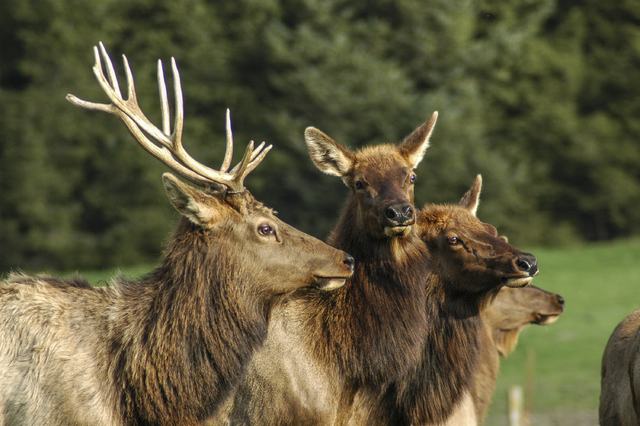Big-game hunters should look for isolated pockets during Nevada fire season

With Nevada’s big-game hunting seasons underway, some hunters are wondering how the wildland fires this season will impact them when they go afield in the coming days and weeks.
As of this writing, 47 wildland fires have burned more than 835,000 acres of Nevada’s landscape since the end of May. According to InciWeb, an interagency website that pulls fire information together in one location, 14 of those fires are still active. However, those 14 fires account for more than 650,000 acres, much of it wildlife habitat.
For those of you with plans to hunt in Arizona and Utah, fires in those states have consumed approximately 388,000 and 128,000 acres, respectively, in 2017.
So, what does this mean for those of you with a big-game tag in your pocket? What does it mean for big-game populations? And what about upland game birds, such as grouse or chukar partridge?
Keep in mind that western wildlands and the animals that are found there have evolved with fire over time. It is not something with which the animals are unfamiliar, and though some animals are killed by wildfires, most species can and do make the necessary adjustments to survive.
Large, mobile species like deer or elk simply move out of the fire’s way. Birds fly elsewhere, and many small animal species seek shelter in burrows or rock piles where they can survive despite the extreme heat associated with fires.
In 2013, the Carpenter 1 Fire burned nearly 28,000 acres in the Spring Mountain Range west of Las Vegas. During that fire, mule deer and other species could be seen moving ahead of the fire. The same thing happened on a large scale during the Yellowstone fires in 1988 and involved multiple species including Rocky Mountain elk and American Bison. In many instances, animals sought out islands of unburned habitat and rode out the firestorm in small pockets of habitat.
This is not to say that wildlife is not affected by wildfire, but wildlife populations are resilient.
If you or your friends have tags in an area where a fire occurred this summer, don’t overlook the burn when your season starts. Contrary to what humans might do, wildlife species will often move back into those areas that have been burned once a fire has been contained. This is already true, for example, where the Brian Head Fire burned on Cedar Mountain in Southern Utah. Phil Tuttle, outreach manager for the Utah Division of Wildlife Resources, said “abundant elk and deer are present and thriving within the burned areas of the fire.”
Wildland fires often burn in a mosaic pattern, leaving behind islands of vegetation that provide food and cover. Even a small patch of vegetation in the middle of a burn can hold a dandy buck, but many hunters will overlook these isolated areas and unwittingly pass up the opportunity to fill their tag. These pockets are places to look for deer, elk and even upland game birds.
If there is an active fire in your hunt area, be sure to give fire crews a wide berth. Watch out for emergency vehicles on the ground and in the air, and be sure to follow any direction crew members might give you. They know a little more about fire behavior than the rest of us.
Before going afield, you can find updated information about wildland fires in your hunt area, both active and inactive, online at InciWeb (https://inciweb.nwcg.gov), the National Interagency Fire Center (https://www.nifc.gov/) and the Great Basin Coordination Center (https://gacc.nifc.gov/gbcc/index.php). You will have to do some map-to-map comparisons in some instances to see how your hunt area might be affected, but the information is available.
Opening dates
Hunting seasons open Sept. 1 for mourning dove, and blue and ruffed grouse in Nevada. Dove season also opens Sept. 1 in Arizona and Utah. Be sure to obtain your HIP number before going afield.
Hunters hoping to hunt swan in Nevada must apply for a permit online at huntnevada.com. The deadline is Aug. 21. Open counties are Lyon, Churchill and Pershing.
Freelance writer Doug Nielsen is a conservation educator for the Nevada Department of Wildlife. His “In the Outdoors” column, published Thursday in the Las Vegas Review-Journal, is not affiliated with or endorsed by the NDOW. Any opinions are his own. Find him on Facebook at @dougwritesoutdoors. He can be reached at intheoutdoorslv@gmail.com.












